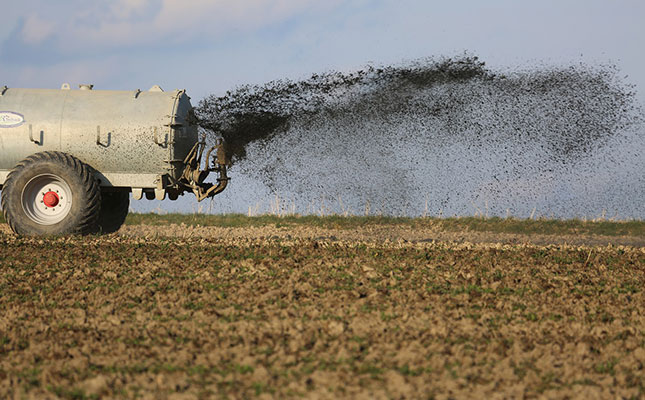
Photo: Pixabay
Grain farmers need to prepare to pay even more for fertiliser when the new planting season gets underway due to the weaker rand which has seen the local price of some fertilisers increase by over 20% in April on a year-on-year basis.
This was evident in the price of diammonium phosphate (DAP), which increased 22,6% from R3 256,80/t in April last year to R3 992,55/t in April 2020, said Fezeka Matebeni agricultural economist of agro-food chains, at the Markets and Economic Research Centre of the National Agricultural Marketing Council (NAMC).
READ Growing garlic: soil types
According to the centre’s cost monitoring report for May, the international price of urea, which is the world’s most common nitrogen fertiliser, also increased 4,9% from R5 451,60/t to R5 719,56/t, while muriate of potash (MOP) decreased 1,5% from R3 922,32/t to R3 862,56/t.
The domestic price of urea and potassium chloride (KCL) increased 14,9% from R97,90/t to R112,50/t, and 7,4% from R96,20/t to R103,40/t, respectively.
“Maize production is estimated to be the largest consumer of fertiliser, [representing] almost 40% of the total fertiliser market; followed by sugar cane (15%); and wheat (10%),’’ Matebeni said.
READ Potato farmer’s virgin soil strategy to reduce disease risk
“The cost of fertiliser represents around 35% of the variable cost [for a grain farmer],’’ she added.
Matebeni said South Africa imported about 80% of all fertilisers utilised by crop farmers, which meant that any changes in the global fertiliser market and the value of the rand directly affected domestic grain farmers.
READ Large-scale composting turns waste into healthy soil
“From a demand perspective, India and South America (led by Brazil) are the largest urea-importing regions in the world. When India is purchasing, global prices tend to be higher. When the country is not, suppliers to India have to find different outlets for their products, which typically causes prices to drop,” she said.
“Positive demand pulls from North America and Brazil [towards the end of 2019] supported global prices,’’ she said.
Matebeni said the biggest risk factor for South African producers remained the strength or weakness of the exchange rate of the rand against other major international currencies. If the rand strengthened going forward, it would mean that lower fertiliser prices could be passed on to farmers.
Andre Kirsten, a wheat farmer in the Swartland region in the Western Cape, said in the beginning of the planting season this year, the price of fertiliser was about 12% to 15% lower than last year, due to the rand performing better against the US dollar, but from the end of April this year, prices had increased noticeably as the rand weakened.










